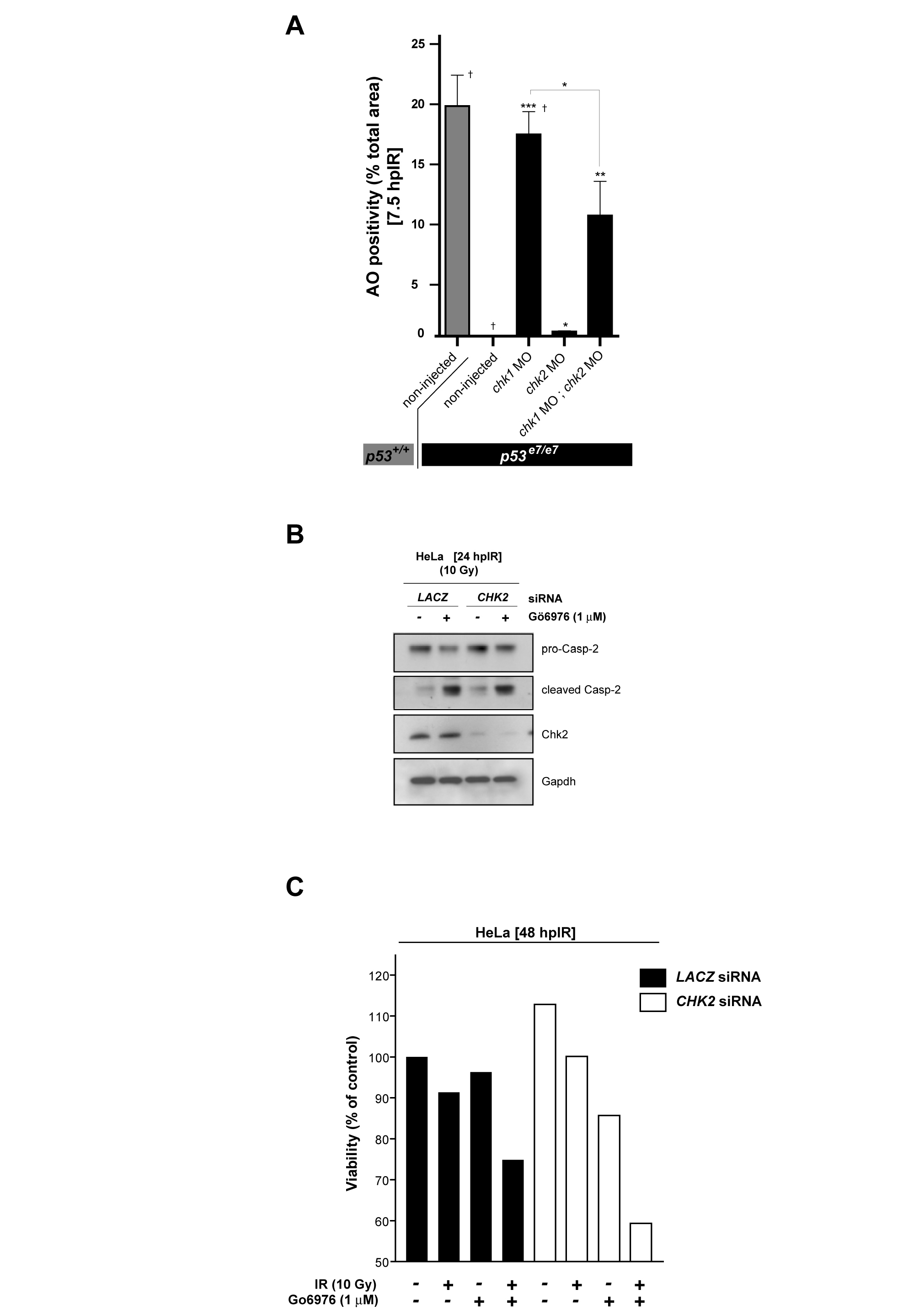Fig. S4
Chk1-suppressed apoptosis in both zebrafish embryos and human cancer cells is largely Chk2-independent
(A) AO uptake in embryos injected at the 1-cell stage with indicated MOs (x axis) was quantified by analyzing images of whole embryos photographed live at 7.5 hpIR (12.5 Gy) (images as in Figure 1A, C). Bars are color-coded and refer to the genetic background used for injections (gray, p53+/+; black, p53e7/e7). AO staining was quantified in ≥8 embryos per knockdown, with 50 or more embryos scored per knockdown (except †, >1000). Data are reported as means ± SEM. * P<0.05; ** P<0.005; *** P<0.0005 (two-tailed Student’s t-test). Note the modest (∼30%) reduction in AO reactivity in p53e7/e7;chk1MO;chk2MO embryos compared to p53e7/e7;chk1MO embryos.
(B) Western blot showing the levels of pro- and cleaved caspase-2 at 24 hpIR (10 Gy) in HeLa cells that were treated or not treated with Gö6976 for 24 hr, and that were transfected at 72 hr prior to treatment with siRNAs against LACZ or CHK2. Whereas the CHK2 siRNA strongly knocked down Chk2, it failed to block caspase-2 cleavage.
(C) Analysis of HeLa cell survival at 72 hpIR (0 Gy vs 10 Gy) in the presence or absence of G&oum;6976 (1 μM) and in the presence of a LACZ or CHK2 siRNA (black and white bars, respectively). Whereas CHK2 siRNA confers protection to IR alone, it fails to protect cells treated with both IR and Gö6976.
Reprinted from Cell, 133(5), Sidi, S., Sanda, T., Kennedy, R.D., Hagen, A.T., Jette, C.A., Hoffmans, R., Pascual, J., Imamura, S., Kishi, S., Amatruda, J.F., Kanki, J.P., Green, D.R., D'Andrea, A.A., and Look, A.T., Chk1 Suppresses a Caspase-2 Apoptotic Response to DNA Damage that Bypasses p53, Bcl-2, and Caspase-3, 864-877, Copyright (2008) with permission from Elsevier. Full text @ Cell

